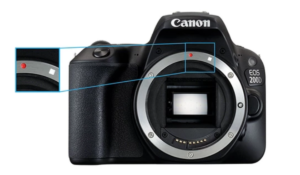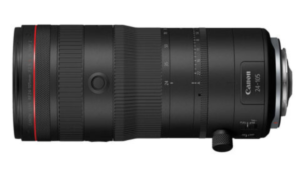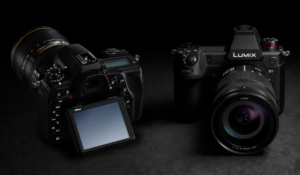Demystifying Canon Lens Acronyms:

Canon lenses are known for their optical quality and technological innovation. However, navigating through the sea of abbreviations and acronyms can be confusing for both amateur and professional photographers. Understanding these abbreviations is crucial to making informed choices when choosing lenses that are tailored to your specific needs. This guide will decode Canon lens abbreviations and explain what they mean. It’s a great way to empower photographers by maximizing their creative potential.
Canon Lens Mount Systems:

Canon offers different lens mount systems that cater to different camera system and sensor sizes. It is important to understand the differences in these mounts so that you can ensure compatibility with your body. Canon’s RF mount, which is designed for full frame mirrorless cameras and offers enhanced performance, versatility, and durability, is the latest innovation. Canon DSLRs use the EF mount, but EF S and EF M mounts are designed for APSC sensors or mirrorless cameras. The FD mount is still relevant to film photography enthusiasts despite being discontinued. Adapters allow compatibility with modern EF camera models.
Canon Lens Type and Class:
Canon’s lens line-up includes a variety of types and classes, each designed to meet specific needs. Canon’s L lenses are distinguished by the red ring and boast superior optical quality. Lenses with specialized features such as tilt-shift, macro, and cinema lenses are available for niche markets, providing unique creative opportunities for both photographers and videographers.
Technological Abbreviations
Understanding the capabilities and performance of Canon lenses requires familiarity with technical abbreviations. USM (Ultrasonic Motor), STM(Stepper Motor), IS (Image Stabilization), etc., are acronyms for autofocus mechanisms, stabilization systems and other factors that influence autofocus speed, noise levels, and manual override capabilities. Optical innovations such as DO (Diffractive Optics), and BR elements (Blue Spectrum Refractive), enhance image quality through minimizing aberrations, and maximizing sharpness.
The Generational Indicators
Roman numerals are used in the names of lenses to indicate their generation, helping users identify newer or older models. Understanding these indicators allows users to identify newer features and technologies. This helps them select the best lens for their needs.
Premium Lens Features:
Canon’s L lenses are the pinnacle in optical excellence. They feature advanced technologies, weather-sealed design and professional performance under challenging conditions. These lenses are distinguished for their high-quality images, rugged build and Ultrasonic Motors that deliver unmatched precision and reliability.
Specialized Lens Capabilities:

Canon offers a wide range of lenses that are tailored to certain genres and preferences. Macro lenses allow for close-up photography at 1:1 magnification while tilt-shift lens provide unique perspective control in architectural and landscape photography. Cinema-specific lens offers cinematic aesthetics as well as precise manual control to videographers.
Optical Innovations
Diffractive optics (DO) and Aspherical lenses are technological advancements that enhance optical performance by correcting aberrations, and maximising image clarity. Canon lenses are designed to deliver consistent, exceptional results in a wide range of shooting conditions.
Motor Types

Autofocus motors, including USM, STM and MM, have different levels of performance. Understanding the different motor types allows users to choose lenses that best meet their autofocus needs, whether they are looking for fast and quiet focusing in still photography or smooth focusing when recording video.
Image Stabilization:
Optical Image Stabilization technology (IS) reduces camera shaking, allowing photographers to capture sharper photos at slower shutter speed. This feature is especially useful in low-light situations or when taking pictures handheld. It ensures crisp, clear results in even the most challenging situations.
Create Effects
Softfocus (SF), Defocus Smoothing, and other features like these can add a unique aesthetic to portraits and creative photography. These tools allow photographers to explore different forms of expression and create images that have a unique aesthetic appeal.
Compatibility:
To ensure optimal performance, users should take into account compatibility when selecting lenses. This includes sensor sizes and shooting requirements. Understanding compatibility allows for seamless integration of camera and lens. This allows photographers to focus solely on their creative vision.
Useful Applications
By understanding Canon lens abbreviations, photographers can make more informed decisions about lenses and achieve desired photographic results. Understanding the meaning of each abbreviation, and how it impacts lens performance allows users to confidently select lenses that best suit their shooting style.
Canon Lens Format Abbreviations:

Canon lens abbreviations like EF, EF S, EF M, RF, RF S, FD FDn and FL are used to identify compatible lenses with camera systems. This ensures seamless integration and optimal performance.
Canon Lens Class and Tech Abbreviations
Understanding abbreviations such as L, SSC (Lens Specification Code), I, II,III, USM (Micro USM), STM (Stabilization Technology Module), AFD (Autofocus Device), MM, PZ and IS can provide valuable insight into the lens’ quality, autofocus mechanism, and optical stabilization technology. This allows users to make an informed decision when choosing lenses.
Specialized Canon Lens Abbreviations:
Understanding specialized abbreviations like Macro and Compact Macro and their respective acronyms MP-E and TS-E as well as DO, Softfocus and DS will help photographers select lenses that are tailored to genres and preferences. This opens up new creative opportunities and helps achieve desired photographic outcomes.
Lens Example:
By analyzing the name of a lens such as Canon EF 70-220mm f/2.8L IS II USM users can gain insight into the compatibility of the lens, its optical quality, autofocus features and stabilization capabilities. This helps them understand the capabilities of the lens prior to making a purchasing decision.



